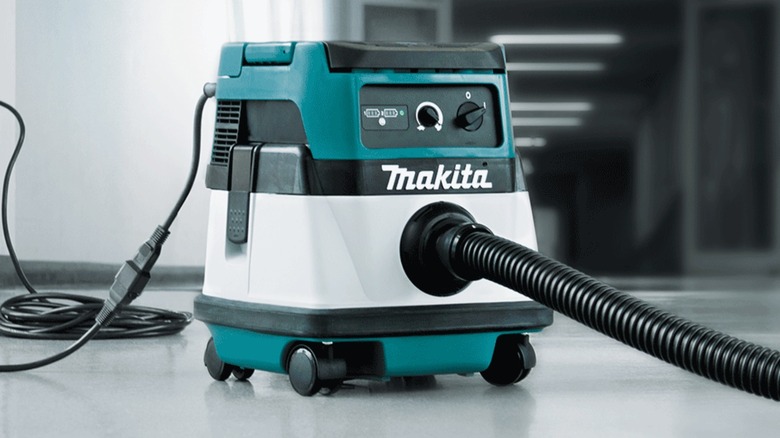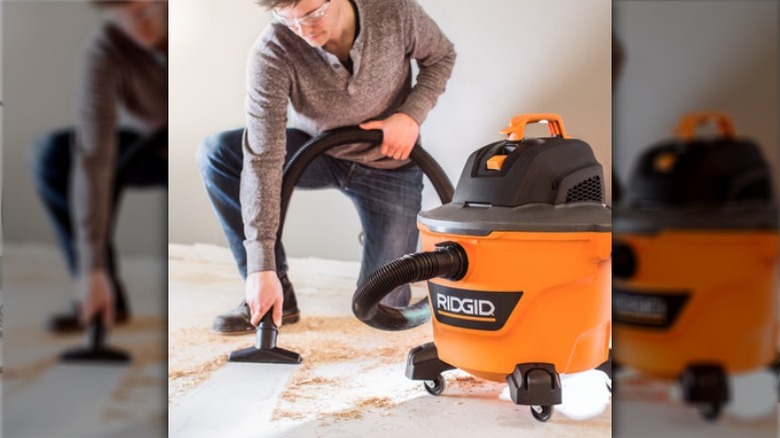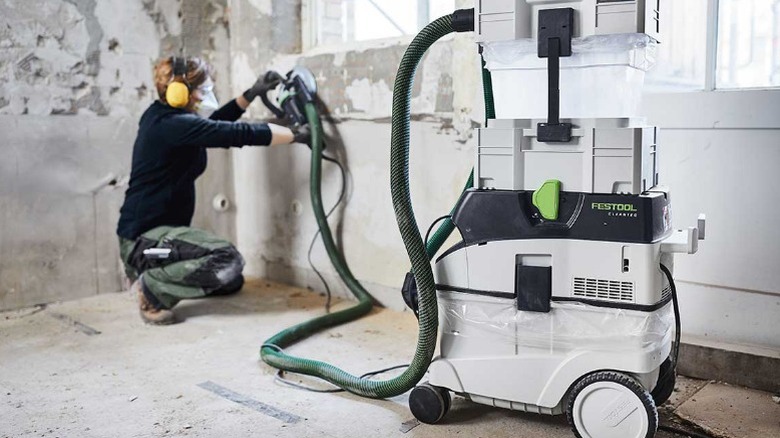Is A Dust Extractor Better Than A Shop Vac For Woodworking Projects?
We may receive a commission on purchases made from links.
There are a lot of different kinds of woodworking, but one of the biggest struggles that every carpenter faces is dust management. It doesn't matter if you're using a table saw or a palm sander; just about every power tool in your arsenal is going to send copious amounts of sawdust flying in every direction each time that you use it unless you have some means of capturing it. So, unless you want to be able to make dust angels on your workshop floor, you're going to need either a shop vac or a dust extractor.
Those who aren't familiar with these two tools may not understand the difference between them and might therefore be curious to learn a bit more about what separates them in terms of design and specs. You might also want to know if the dust extractor is a better tool for your woodworking projects or if you're better off sticking with one of the more basic shop vacs that are sold by just about every major power tool brand. I've been building custom shelving, furniture, and storage solutions for the better part of a decade, and in my experience, the dust extractor is going to be the better solution for the majority of woodworkers.
What's the difference between a shop vac and a dust extractor?
You may have already used a shop vac, whether it was for woodworking, jobsite cleanup, or simply to vacuum out your car. It's a relatively simple tool that uses a motorized head to generate suction, with an airflow that is usually somewhere in the neighborhood of 100-200+ CFM. This pulls air through a hose, a collecting bin, and, finally, a basic filter. Some of them may use HEPA filters as well, but most aren't designed to capture ultra-fine particulates. These usually use 2.5-inch diameter hoses. These are great to have for basic clean up, they can often handle water, and you can use them for dust collection directly from tools, to an extent.
Dust extractors are still vacuums, but their design is different in a number of ways. They usually have similar CFM flow, but channeled through a narrower 1-inch or 1 ½-inch hose to create significantly greater 'water lift' suction over longer lengths, This is specifically optimized for pulling the fine dust particles and wood debris from the tools' vac ports before their rapidly spinning blades, pads, or other attachments can launch them into the air. They have more advanced filtration solutions, which also generally include HEPA. Many of them have automatic tool activation tech that turns the extractor on any time a connected tool powers on automatically. Dust extractors such as the options from Milwaukee and DeWalt, use hardshell bins for storing waste that look similar to shop vacs. But it's worth noting that there are also 'dust collectors' available for small shops, such as the ones made by Wen and Jet, which utilize separate collection bags that keep most of the dust from reaching the filter.
Why is the dust extractor better for woodworking?
Now that you know a bit more about how these devices are different, you can probably already see some of the reasons why dust extractors are better for most woodworking applications.
I've used a regular shop vac on a table saw and a few other tools, and while it's certainly better than nothing, there is still a fair amount of dust that manages to escape with each cut. The filters on shop vacs can also get easily clogged with fine sawdust. This leads to a loss of suction in the short term, but it might also lead to long-term damage to your vacuum's motor as it struggles to pull air through a clogged pathway. On top of that, you might need to separately purchase adapters to make the 2.5-inch hose fit over the 1-inch or 1 ½-inch fittings that you'll find on most tools' vac ports.
The higher water lift rating and narrower pathways used by dust extractors all contribute to the tool capturing more dust before it goes into the air. Their filters are designed to clog less frequently while also managing to capture more of the fine particulate that shop vacs might eject back into the air. Also, additional features such as auto-start can add layers of convenience.
The one major downside to dust extractors is that they tend to be significantly more expensive than their shop vac counterparts. For example, you can get a 12-gallon DeWalt shop vac for just $119.00, while the company's 10-gallon dust extractor is currently going for $699.00. Shop vacs might also be a better solution for cleaning up job sites and construction areas that have a lot of heavier debris in addition to wood chips and dust.


